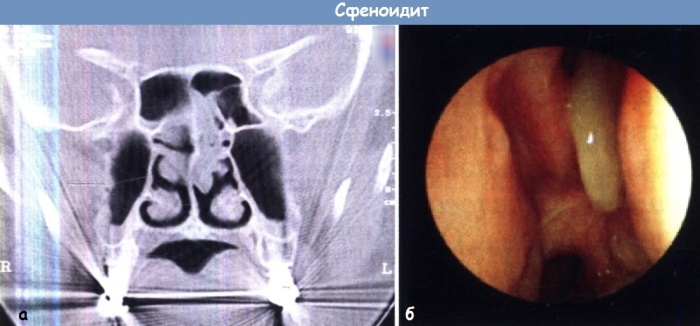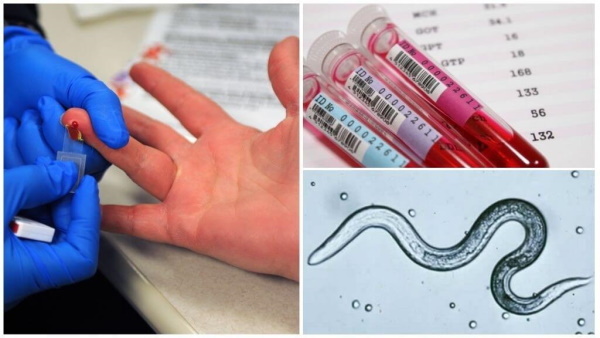Sometimes symptoms sigmoidita prevails in colitis - a diffuse inflammation of the colon. The sigmoid colon inflammation develops more frequently than in other parts of the intestine. Sigmoid affects both sexes, among patients with marked predominance of women. Adults who suffer most children. The probability of occurrence increases with age. The treatment carried out by specialists in the field of gastroenterology and proctology.
In this article we will look at the sigmoid, its symptoms when treatment sore left lower abdomen in women.

What it is?
Sigmoid - inflammation of the sigmoid colon acute or chronic course. Women are more likely to develop sigmoidita than men. Adults are affected more often children. With age, the risk of disease increases. Treatment is carried out proctology and gastroenterology.
Causes of
Sigmoidita rise may lead to the following factors.
- Increased pressure in the sigmoid colon during pregnancy.
- intestinal ischemia (deficiency of circulation), which often occurs when atherosclerosis.
- Exposure to radiation during chemotherapy, due to which some structures are destroyed mucosal cells of the digestive system.
- dysbacteriosis, Enhances reproduction of pathogenic organisms and suppressing the amount of beneficial bacteria to ensure the normal process of digestion.
- Dysfunction of the digestive system, in particular - frequent constipation, which provoke microtraumas sigmoid colon wall and the subsequent development of inflammation.
- Intestinal infection, which occurs due to the process of inflammation in the intestines. Pathological microorganisms in the excessive propagation in the intestinal mucosa produce toxins, damaging the intestinal wall, thus contributing to the appearance of erosions and even ulcers. Due to the anatomical features of the sigmoid colon it is most vulnerable to the adverse effects of toxins.
- Chronic bowel disease, particularly ulcerative colitis, Crohn's disease. When these diseases occur damage of the intestinal mucosa, erosions and ulcers occur on its walls. In turn, to the emergence of these diseases results in exposure of a number of factors, including autoimmune response of the body at which the self-destruction of the intestinal wall cells. Unfortunately, completely eliminate the effect of this causes an extremely difficult, so the presence of such violations the patient is forced for a long time to take special drugs that reduce the severity of symptoms.
When the above symptoms should consult a doctor and undergo inspection by the appointed of sigmoidoscopy, the bowel radiography, performing blood tests and stool, as well as other methods.
Classification
Like most inflammatory diseases, sigmoid can occur acutely or chronically. In addition, the following kinds of it, differ in the nature intestine damage:
| catarrhal sigmoid | The lightest form, whereby only the top layer is damaged intestinal epithelium. |
| ulcerative sigmoid | This form occurs during prolonged stimulation of erosion on the surface of the intestine, so that they turn into sores - the deeper mucosal defects. |
| erosive sigmoid | It is a continuation of no cure catarrh and characterized by destruction of the epithelium of the intestine with the formation of erosions on it - do not open the protected areas of the mucosa. |
| Perisigmoidit | It represents the most severe form of the disease. Through the ulcer surface inflammation penetrates into the deeper parts of the intestinal wall, reduces its mobility, and abdominal adhesions starts (the process of intestinal loops compound between themselves). |
Manifestations of these forms may be combined with each other. This makes it difficult to differentiate sigmoidita with other pathological conditions.

What are the symptoms?
Relying on the fact that the disease has several forms, sigmoidita symptoms may also vary depending on the tour de force.
The main clinical picture considered such signs:
- The occurrence of violations of the chair. Most often there is diarrhea, constipation rarely occur. Urge to defecate are becoming more frequent, something that is explained by the irritation and ulcers are also typical for this disease. Thus feces has a liquid consistency, often with blood, mucus, pus, and strong odors.
- Soreness in the left iliac area. Pain intensity is high, often extending to the lower back or leg. It is important to remember that the sigmoid colon is very mobile. Therefore pain can be localized not only in the lower left corner of the abdomen, but also be moved closer to the center or even diaphragm.
- The deterioration of the patient's general state of health. Due to the depletion of the body's long-term disease may manifest weight loss, sleep disturbance, deterioration and decreased performance. Sore left lower abdomen in women.
Acute sigmoid characterized by the features - diarrhea, mucus, blood or pus in stools, stench of concrements. You may receive the gag reflex. Nausea is stored for a long period and has a rotten smell.
When remission of chronic type the patient has no symptoms. Stress can trigger a relapse, poor diet, trauma or infection. In such case the patient aggravated disease and symptoms begin to appear above.
Diagnostics
For diagnostic use the results of the following studies:
- The survey and examination of the patient, palpation of the abdomen. Through these studies, the doctor can determine the exact location of the lesion, and to conclude what kind of bowel section is involved in the inflammatory process.
- General blood and stool analysis. These studies will help to pinpoint the severity and nature of the inflammatory process.
- Radiography is carried out to differentiate sigmoid with impaired intestinal permeability.
- Women - data gynecological examination to exclude gynecological pathologies such as endometriosis, adnexitis, tubal pregnancy, and some others, the ability to give a similar clinical picture.
- Sigmoidoscopy is performed for the direct study of colonic mucosa membrane. Based on the results of the study it can be concluded form of the disease and the area affected, and to prevent cancer.
After gathering all the information the doctor establishes the definitive diagnosis and assigns sootvetstvuyushaya therapy.
sigmoidita treatment
Treatment of inflammation of the sigmoid colon - rather complicated and long process, requiring accurate patient compliance with the prescribed regimen. The principle of treatment is to receive medical preparations, bedrest in exacerbations of disease and special diet.
To conduct medical therapy administered the following drugs for the treatment of sigmoidita women:
- Antispasmodics and anesthetics;
- Formulations having astringent and enveloping sedative action;
- Antibacterials (fluoroquinol, tetracycline, ampicillin, doxycycline);
- Candles methyluracil, corticosteroids and microclysters with camomile broth in acute sigmoid.
At an exacerbation of the disease the patient must comply with bed rest and a certain diet. After decrease in acute symptoms the patient is prescribed for one or two months of taking drugs that restore the intestinal microflora (laktobakterin, bifiform). During treatment, a good result allows for herbal medicine.
It has a positive effect on the intestinal motility and has astringent, analgesic and anti-inflammatory effect. If the cause of inflammation are infectious processes, the aid will come a strict diet compliance with certain drinking regime and vitamin therapy.
The diet in the acute form
In acute sigmoid patient should receive enough vitamins, proteins, minerals and electrolytes. You can drink the broth hips, strong tea without sugar and so on. D. By limiting fall salt, fats, carbohydrates, as well as all the dishes containing thermal, chemical or mechanical irritants. Completely eliminated hot and cold dishes.
Food should be thoroughly mashed, boiled or steamed. Meals - a fraction (5-6 times a day). Recommended rejection of products that enhance the processes of putrefaction and fermentation in the gut that stimulate the production of bile and digestive juices. When calming inflammation patient is transferred to a common table with the exception of alcohol, spices, smoked, fried, spicy and salty foods.

Nutrition in chronic
In chronic sigmoid during remission in order to prevent constipation include food products rich in dietary fibers. recommend:
- beet;
- carrot;
- pumpkin;
- dried apricots;
- prunes;
- vegetable and fruit juices;
- biscuits and bread and bran.
A tendency to constipation is very effective appointment of wheat and rye bran. A tablespoon of bran, pour a glass of boiling water and allow to infuse for 30 minutes. Then water is drained and the resulting slurry was added to the cereal, cheese, soups, or take in a pure form, with water. Dose bran can be increased up to 6-8 tablespoons per day (in the absence of pain and diarrhea).
In the case of stable remission is best to go to the general table with the exception of fatty meat, spicy and savory, smoked and canned goods, pastry and alcohol. If the appointment of the total diet is the process of worsening, it is necessary to return to 4c diet.
Diet for chronic sigmoid during exacerbations is the same as for acute sigmoid. In cases where the disease occurs in severe and the patient loses much of its weight (15% or more of body weight), have to resort to parenteral nutrition. Through a catheter in the subclavian vein injected solutions protein preparations, essential amino acids, fat emulsions, glucose solutions, electrolytes.
prevention
Preventive measures aimed at elimination of acute exacerbations sigmoidita and disease in chronic. The main measures include:
- proper nutrition;
- healthy lifestyle;
- timely treatment of infectious diseases;
- prevention of intestinal infections;
- prevention of constipation.
Sigmoid requires accurate diagnosis and timely treatment. Subject to all medical recommendations in chronic illness can achieve persistent clinical remission. sigmoidita Treatment long, includes not only medical or surgical correction, but maintaining a healthy lifestyle.

Prognosis and complications
With proper treatment sigmoidita in most cases possible to achieve a full recovery, but it should be understood that the process and long treatment accompanied by weight restrictions Compliance diet.
In the absence of treatment, the inflammation may spread to neighboring segments of the intestine, most often in the rectum (proctitis). Also, with the progression of the inflammation may be disturbed bowel leak, resulting in peritonitis will be - an inflammation of the abdominal cavity, requiring extensive surgery.



